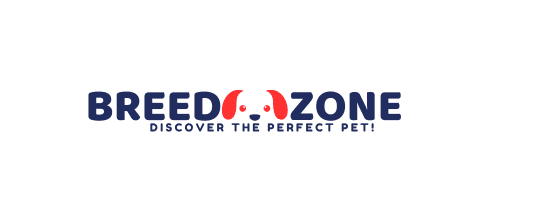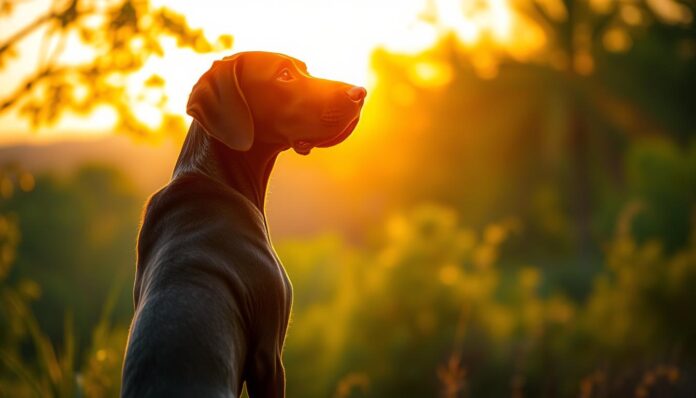The Plott Hound is a rare breed, ranking lower than 173 out of 197 breeds by the American Kennel Club. Yet, it’s North Carolina’s official state dog, recognized in 1989. This shows its importance in American hunting history and its lasting bond with families.
Plott Hounds are medium to large dogs known for their loyalty and hunting skills. They excel in active homes, ready for adventure but also loving family time. Their distinctive brindle coats and deep bark make them stand out, fitting both the outdoors and home life.
Plott Hound Breed
The Plott Hound comes from the mountains of North Carolina. It shows the American hunting spirit. This breed started in the late 18th century, thanks to the Plott family.
They wanted a dog for hunting. The Plott Hound became a part of North Carolina’s history. In 1989, it was named the official dog of North Carolina.
Origin and Recognition Status
The Plott Hound’s ancestors came to America in 1750. They were Hanoverian Schweisshunds. Johannes George Plott started the breed.
In 2006, the AKC recognized the Plott Hound. It’s part of the Hound Group. It’s different from other coonhounds.
In North Carolina, the Plott Hound is celebrated. A historical marker in Haywood County honors it. Hazelwood Elementary School uses the Plott Hound as its mascot.
Distinctive Traits and Features
Plott Hounds are 20–25 inches tall. Males weigh 50–60 pounds, females 40–55 pounds. They have brindle coats and are muscular.
They need 1–2 hours of exercise daily. They are intelligent and have a strong tracking instinct. Their short, smooth coat needs weekly brushing.
Role in American Hunting Tradition
Plott Hounds are great at hunting big game like boars and bears. They are different from other coonhounds because they hunt big game. Their tenacity and endurance make them perfect for rugged terrain.
Their baying calls and determination are key in Southern hunting. They are valued for tracking wounded game. This skill comes from their Hanoverian ancestors.
The Rich History of Plott Hounds in North Carolina
The plott hound’s journey to becoming North Carolina’s iconic breed started in 1750. Johannes Plott, a German immigrant, brought five Hanoverian Schweisshund dogs to America. They settled in what is now Haywood County, where the Plott family refined these dogs.
Over 200 years, the Plott Hounds perfected hunting wild boar and bear. They became essential to early settlers in the Appalachian terrain.
In 1989, North Carolina made the plott hound its state dog. The U.S. Park Service named the Plott Balsams in the Pisgah National Forest after the family. This breed’s strength was shown in 1935 when they tracked 20 bears in three days, killing eight.
| Year | Event | Impact |
|---|---|---|
| 1750 | Johannes Plott arrives in NC | Founding of the breed in the U.S. |
| 1800s | Breed refined for bear hunting | Established reputation as big-game hounds |
| 1935 | Branch Rickey’s bear hunt | Highlighted the breed’s tracking prowess |
| 1989 | State dog designation | Legal recognition of NC’s heritage |
| 2007 | American Kennel Club recognition | National acknowledgment of breed standards |
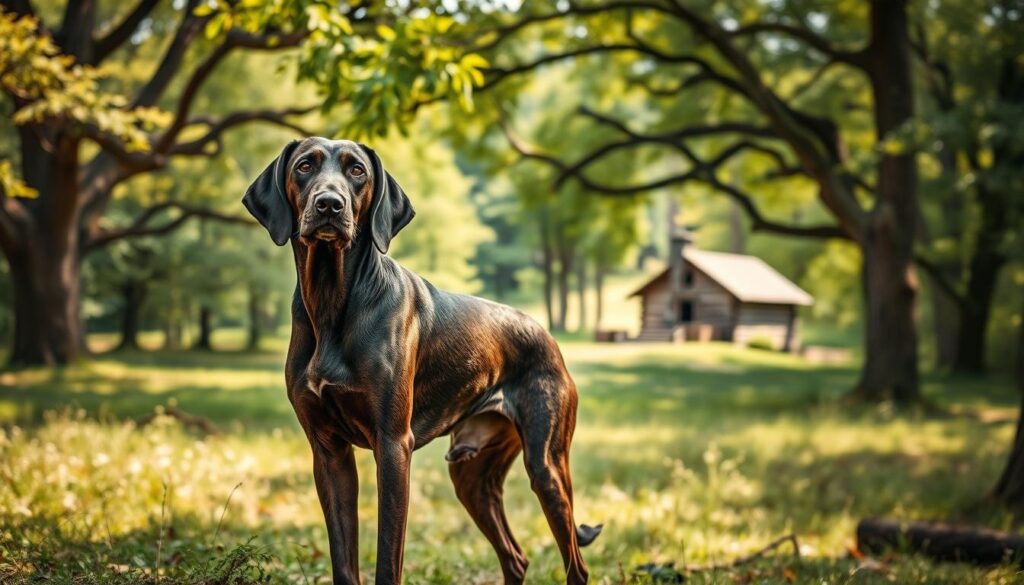
Despite their fame, plott hounds are rare outside the South. Their legacy lives on in NC’s hunting culture. Their fierce loyalty and endurance symbolize the state’s outdoor traditions.
Physical Characteristics and Appearance
Plott Hounds are a mix of strength and grace, shaped by years of mountain hunting. Their strong bodies and lively movements show they are working dogs. Their brindle coats and powerful legs make them stand out from breeds like the Mountain Cur.
Size, Weight, and Build
| Gender | Height (inches) | Weight (lbs) |
|---|---|---|
| Males | 20–25 | 50–60 |
| Females | 20–23 | 40–55 |
Their size shows they are well-balanced, not too big or too small. Their athletic build helps them last long on tracking missions.
Coat Colors and Patterns
- Brindle dominance: Shades include yellow, red, tan, or black, with white markings allowed only on feet/chest
- Rare variations: Chocolate, liver, or blue brindle (recognized by breed standards)
- Texture: Short, glossy coat resists harsh weather without requiring frequent grooming
Structural Features and Athleticism
They have well-defined muscles and a deep chest for better breathing. Their floppy ears help catch scents. Unlike the Mountain Cur, Plott Hounds move easily over rough terrain.
Their body shape is streamlined, with all parts in balance. Their tail is held high but not curled, showing they are always ready.
Temperament and Personality Traits
Plott Hounds are independent but very loyal. They make great companions and are versatile. They are confident and loving, fitting well into both work and family settings.
These dogs do best in homes where they can stay active. They love to learn and need to feel connected to their family.
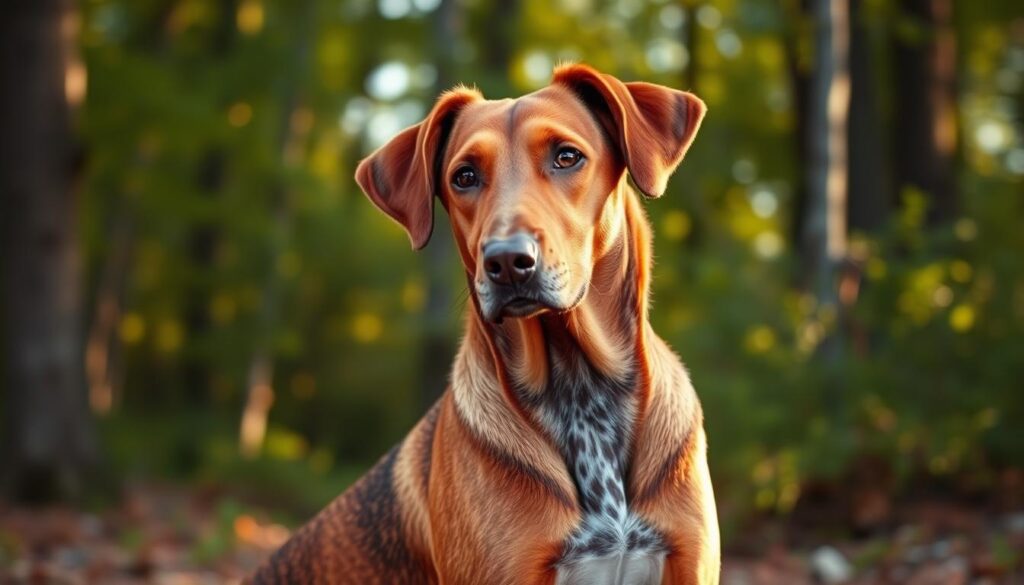
Intelligence and Trainability
Plott Hounds are among the smartest hound breeds. They are quick to learn and adapt to different tasks. Their intelligence shines in:
- Quick learning of commands and scent work
- Adaptability to hunting roles and obedience tasks
- Response to reward-based training methods
They need mental challenges to avoid boredom. Their desire to please makes them reliable in many situations.
Family Compatibility
At home, Plott Hounds are loving and can sense when you’re upset. They have lots of energy, making them perfect for active families. They are also patient with kids.
They can get along well in busy homes. But, they might be a bit wary of strangers because of their protective nature.
Interaction with Other Animals
It’s important to socialize them early to control their hunting instincts. They might chase small animals, but training can help them live with pets. Raised with other dogs, they can form strong bonds.
But, they need to be watched around small animals because of their natural instincts.
You May Like:- The Beagle Basset Hound Mix: Unveiling the Charms of this Hybrid Dog
The Plott Hound as a Hunting Companion
The Plott Hound is a top-notch hunting dog. They have been bred for centuries to excel in tough outdoor activities. Their ancestors in North Carolina’s Appalachian Mountains were bred to chase large game like bears and boars. Today, they are known for their stamina and focus, earning recognition from the American Kennel Club in 2006.
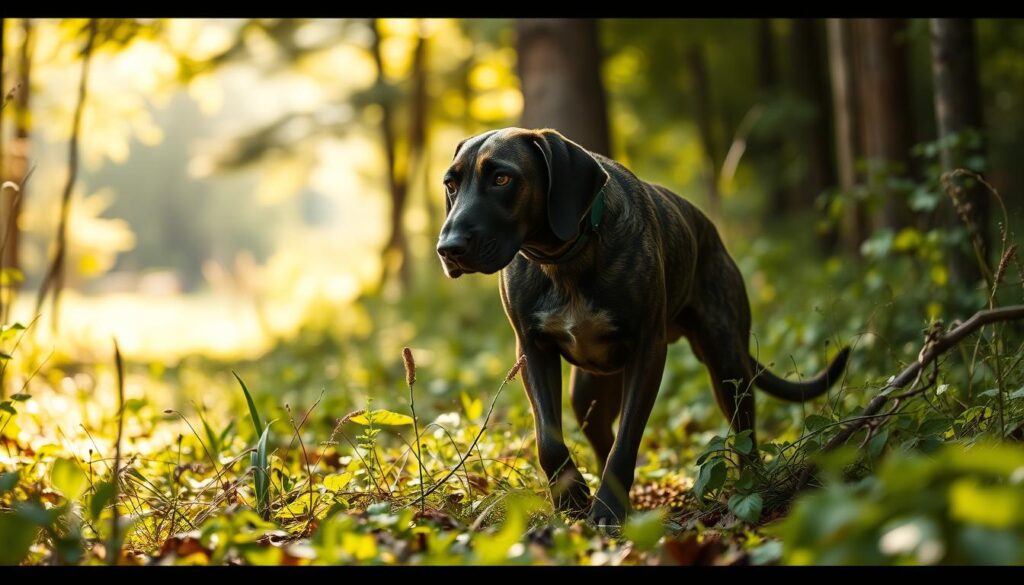
Plott Hounds have unmatched tracking abilities. Their sharp noses can follow scents for miles, even in bad weather. Their strong bodies let them climb steep hills fast. They also have a strong treeing instinct, which means they chase prey into trees and bark to alert hunters.
| Breed | Height | Weight | Lifespan | Key Trait |
|---|---|---|---|---|
| Plott Hound | 20–25″ (males) / 20–23″ (females) | 50–60 lbs | 12–14 years | Tracking and treeing |
| Black and Tan Coonhound | 23–27″ | 65–110 lbs | 10–12 years | Nighttime raccoon specialization |
These dogs can run up to 30 mph. Their brindle coats help them blend into the wild. Hunters love them for their ability to track and work in packs for hours.
Care Requirements and Maintenance
Plott Hounds do best when they get lots of care. They are active dogs that need regular exercise, grooming, and food. This keeps them healthy and full of life.
Exercise Needs and Activity Levels
- Need daily vigorous activity: 1–2 hours of running, hiking, or tracking exercises
- Need mental stimulation through scent work or obedience training to prevent boredom
- Best suited to owners with large yards or access to outdoor spaces for daily exploration
Grooming and Coat Care
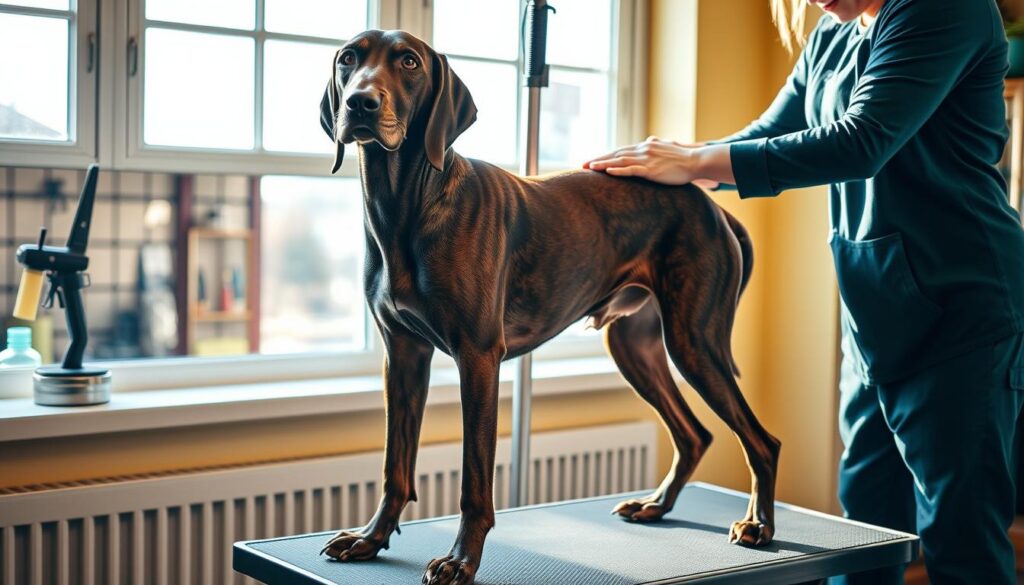
Weekly brushing with a soft bristle brush removes loose fur. Plott Hounds have short coats but require:
- Monthly ear inspections to prevent infections caused by their floppy ears
- Biweekly tooth brushing with pet-safe toothpaste
- Seasonal baths using mild dog shampoo (every 3–4 months unless muddy)
Nutritional Requirements
Adults need two measured meals daily to maintain energy levels. Puppies require three smaller feedings. Prioritize:
- High-protein diets formulated for active breeds
- Avoid overfeeding to reduce obesity risks in inactive households
- Supplements like glucosamine for aging dogs prone to hip dysplasia
Annual vet checkups monitor joint health and address early signs of ear infections. Their 12–14 year lifespan depends on consistent care aligning with their working dog heritage.
Training and Socialization Best Practices
Plott Hounds do well with structured training that respects their independent nature. Their strong tracking abilities and coonhound heritage need tailored methods. This helps channel their instincts effectively.
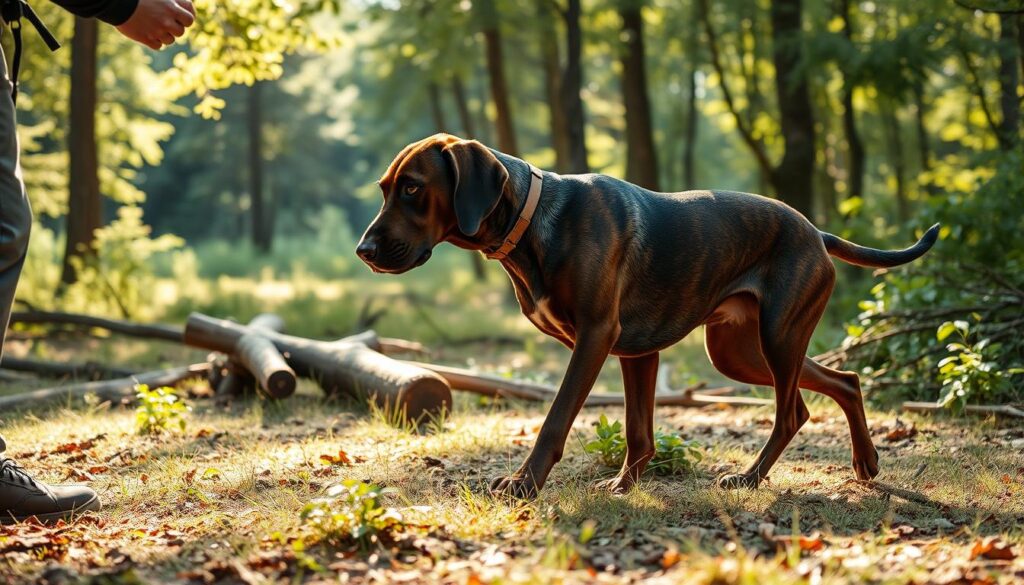
Start socialization by 12 weeks to build confidence. Introduce them to different settings, sounds, and people using positive reinforcement. Daily 15-minute sessions on basic commands like “sit” and “stay” help build trust.
Consistent routines make learning easier. They are less resistant to training.
- Introduce scent work at 6 months using controlled environments
- Reinforce recall commands during tracking drills
- Incorporate treeing exercises to hone their prey drive
These methods turn their coonhound instincts into disciplined skills. Professional handlers suggest starting with live quarry only after basic obedience is learned.
Urban owners can keep their dog’s natural drive satisfied with scent games or agility courses. Mental stimulation like puzzle toys prevents destructive behaviors. Leash walks must be controlled to avoid distractions from nearby scents.
Patience is key when dealing with their problem-solving mindset. Harsh methods can create resistance. Use high-value rewards during obedience drills to keep their focus on commands.
Health Considerations and Longevity
Plott Hounds are known for their strong health, living up to 12–14 years on average. Good care and managing genetic risks help them live longer. Like Mountain Curs, they need to watch their joints, ears, and diet to stay healthy.
- Hip and elbow dysplasia: Genetic conditions that may develop with age, potentially leading to arthritis.
- Ear infections: Their drop ears trap moisture, requiring regular cleaning to prevent redness, odor, or head shaking.
- Bloat (GDV): A life-threatening emergency requiring immediate care if a dog exhibits swollen abdomen or retching without vomiting.
- Skin conditions: Regular brushing and vet checks help manage coat health.
Year-round preventive care is key. Weekly brushing, daily exercise (at least one hour), and a protein-rich diet keep them at the right weight and energy. Annual vet exams and genetic screenings for breeding dogs reduce inherited risks. Joint supplements like glucosamine may support aging dogs.
While Plott Hounds inherit traits from Mountain Cur ancestry, responsible breeding and care keep them active. Early signs like limping, ear discomfort, or sudden lethargy need quick attention to prevent problems. By focusing on preventive care, these sturdy breeds can live up to their full lifespan.
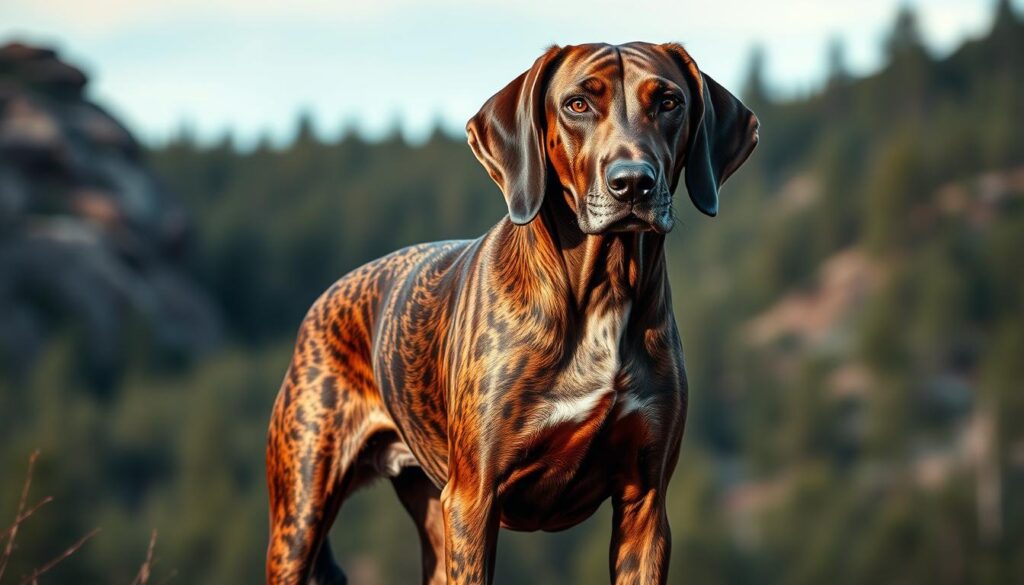
Adopting a Plott Hound: What to Consider
Getting a Plott Hound is a big step. They are great companions but need active owners. Look for ethical sources to adopt from.
Choose a breeder who shows OFA hip evaluations and genetic health checks. Good breeders will talk about their dogs’ history and give references. You can also consider rescue groups like the United States Plott Club or local coonhound rescues. Adult dogs might already fit your lifestyle better.
Think about your daily life before adopting. Plott Hounds need lots of exercise, like running or tracking games. They also have a strong prey drive, so homes with cats or small pets need secure fencing. They have a musty coat that needs weekly baths and ear cleaning.
- Ask breeders for OFA certification records
- Rescue options offer older dogs with established behaviors
- Require a fenced yard to contain tracking instincts
These dogs bond strongly but need consistent training. They do well with positive reinforcement. Remember to budget for vet visits, as they can get hip dysplasia and bloat. With patience, a Plott Hound will be a loyal friend for outdoor fun and family life.
Conclusion: Is the Plott Hound Right for You?
Plott Hounds are versatile dogs that love active environments. They are great at hunting and make loyal companions for families. Their distinctive brindle coat and strong build come from generations of North Carolina heritage.
These dogs need lots of exercise, 30 to 60 minutes a day. They’re perfect for people with lots of space. Their high energy and independence are important to consider.
They are very loyal and protective of children. But, they need training from a young age. Their double coat is easy to care for, but they shed a lot. Health costs can be high, with routine care around $200–$500 a year and emergencies over $1,500.
Early socialization helps them get along with strangers and other animals. Plott Hounds are rare but offer deep companionship. They live for 10–14 years, making them great for many adventures.
They’re best for hunters, hikers, or families in rural areas. Their intelligence and tracking skills mean they’re not for apartment living. But, for those who can meet their needs, Plott Hounds are loyal partners on any journey.
FAQ
What is a Plott Hound?
The Plott Hound is a hunting dog from the United States. It’s known for its tracking skills and unique brindle coat. These dogs are loyal and great for many adventures.
How did the Plott Hound come to be recognized?
The Plott family from Germany started the breed in North Carolina in the 18th century. They bred local hounds to create the Plott Hound. It became North Carolina’s state dog in 1989.
What characteristics distinguish the Plott Hound from other coonhound breeds?
Plott Hounds stand out with their strong build and brindle coat. They have great stamina and treeing skills. These traits make them excellent at hunting big game.
Are Plott Hounds good family pets?
Yes, Plott Hounds are very loyal and loving. They bond well with families. They also get along with kids and other pets if socialized right.
What are the exercise needs of a Plott Hound?
Plott Hounds need lots of exercise and activity every day. This keeps them healthy and happy. Activities that use their tracking skills are best.
How should I train a Plott Hound?
Start training a Plott Hound early with positive methods. They are smart and need respect. Socialization and training for hunting are key.
What health issues should I be aware of with a Plott Hound?
Plott Hounds can get hip and elbow dysplasia, ear infections, and skin problems. Regular vet visits and care are vital for their health.
Where can I adopt or buy a Plott Hound?
You can find Plott Hounds through good breeders or rescue groups. These places focus on health and temperament.
What should I consider before getting a Plott Hound?
Think about if your lifestyle fits a Plott Hound’s needs. Consider the space for exercise, training time, and if you’re ready for an active breed.

